- Home
- Prelims
- Mains
- Current Affairs
- Study Materials
- Test Series
Feb 25, 2022
UNION MINISTER DR. MANSUKH MANDAVIYA LAYS FOUNDATION STONE FOR ‘NANO UREA PROJECT’ AND ‘PHOSPHATE RICH ORGANIC MANURE (PROM)-SHEETALA’ PROJECT AT THE RCF TROMBAY UNIT, MUMBAI
Union Minister laid the foundation stone for ‘Nano Urea project’ and ‘Phosphate Rich Organic Manure (PROM)-SHEETALA’ project at the Rashtriya Chemicals and Fertilizers Trombay Unit in Mumbai.
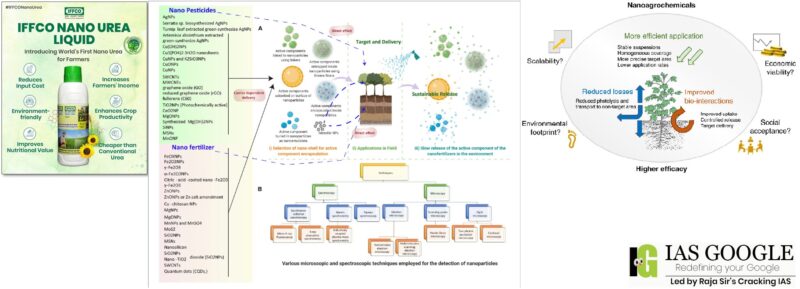 Nano Urea Project
Nano Urea Project
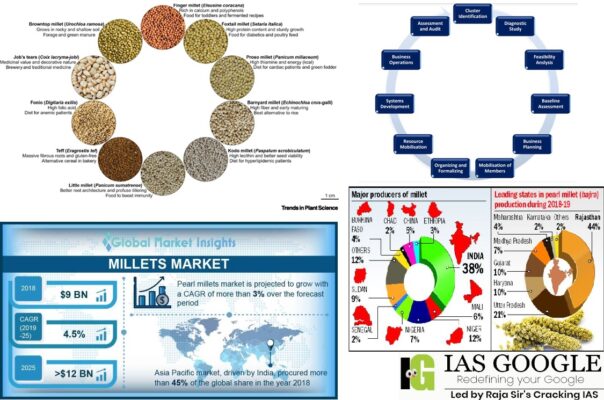 Millets
Millets
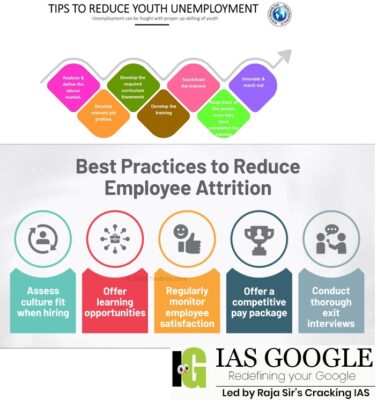 Employment
Employment
 International Mother Language Day
International Mother Language Day
 Mixed Reality
Mixed Reality
 Blockchain Technology
Blockchain Technology
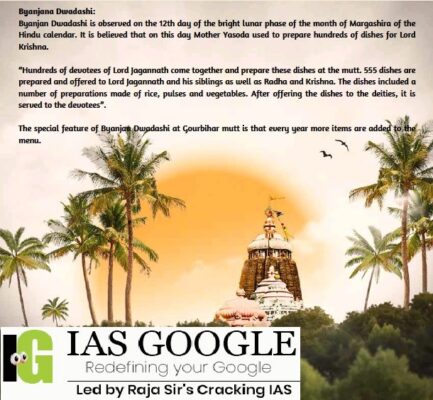 Byanjana Dwadashi
Byanjana Dwadashi
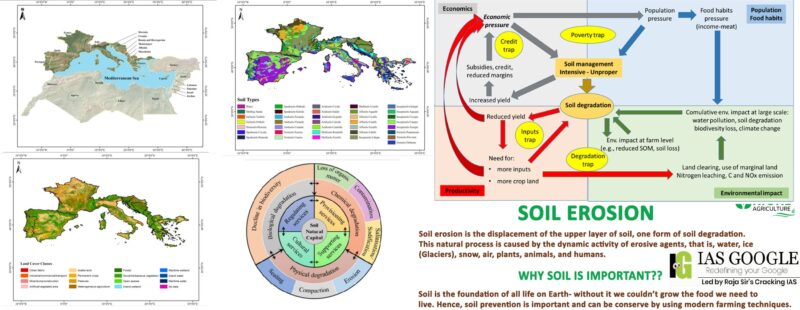 Highlights
Highlights
 About Khajuraho Dance Festival
About Khajuraho Dance Festival
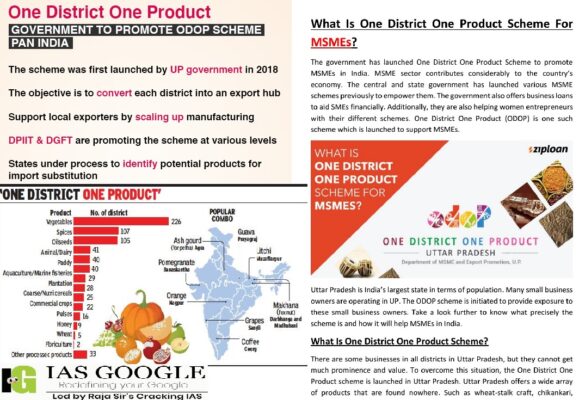 ODOP (One District One Product)
ODOP (One District One Product)
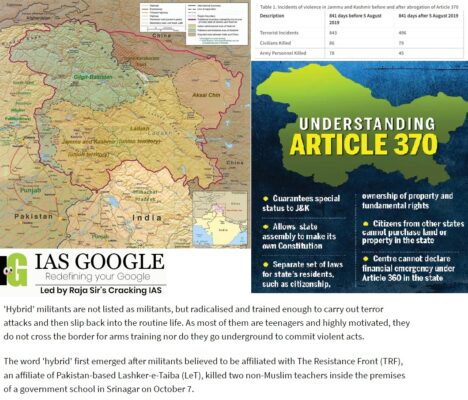 Change on Ground
Change on Ground
 Japanese Encephalitis
Japanese Encephalitis
 Nano Urea Project
Nano Urea Project
- The capacity of the proposed plant at RCF is 1.5 Lakh bottles (500 ml) per day and will be able meet the future demands of farmers.
- After the plant is functional, the nano-urea produced by RCF in a year will be able to replace 20 lakh metric tonnes of conventional urea.
- The Nano-Urea project aims to keep the environment safe for future generations while securing food for all. Nano Urea is a revolutionary product which will help to protect the health of the soil by reducing the use of Urea by up to 50 percent for the same yield. The project is based on the technology developed by M/s IFFCO.
- Union Minister pitched for use of nano-fertilizer as a substitute for conventional fertilizers in the agriculture sector. He said conventional urea has adverse effects on the soil and crops, hence the farmers now-a-days prefer use of soil friendly nano-fertilizers.
- The Nano Urea, in liquid form, when sprayed on the leaves gets absorbed by plants more effectively thereby avoiding losses due to leaching and/or run off to water bodies as in case of conventional Urea.
- The PROM fertilizer unit that will be established here will be able to reduce the use of unsafe fertilizers. The capacity of the proposed Phosphate Rich Organic Manure (PROM) – SHEETALA plant is estimated to be 6,000 MTPA.
- SHEETALA PROM is produced by co-composting rock phosphate and is an efficient way of adding phosphorus to soil as compared to chemical fertilizers.
- The product is a suitable source of nutrient for organic farming and improves the physical, chemical and biological properties of the soil and increases crop production.
- SHEETALA enhances the activity of beneficial microorganisms in soil and helps in humus formation.
- “Nano urea is like taking an intravenous injection rather than popping a capsule. The ultra-small particles are better absorbed directly from the leaf than through the soil. More than 70 per cent of the conventional urea applied in the soil remains unabsorbed by plants and it is wasted.
- The nano urea liquid will increase the production of crops with improved nutritional quality. Due to the ultra-small size and surface properties, the nano urea liquid gets absorbed by plants more effectively when sprayed on their leaves.
- Upon penetration, these nanoparticles reach plant parts where nitrogen is required and release nutrients in a controlled manner, thereby reducing usage while also reducing wastage into the environment.
- The product is also expected to reduce the environmental pollution caused by the granular form, by reducing its excessive application that exacerbates soil, water and air pollution with climate change problems.
- Lower usage and cost increased productivity. The new product will significantly bring down the cost of logistics and warehousing.
- The prime focus of the Government is to reach out to the farmers through all possible mediums and leverage the benefits of governance schemes such as soil health cards.
- IFFCO Nano Urea is a product of the 21st century and it is the need of the hour to keep the environment soil, air and water, safe for future generations while securing food for all. Nano urea liquid promises to radically transform farming in India and across the world by raising productivity while reducing environmental pollution and input cost.
- Speaking at the session, it was mentioned that, “We urge the start-ups and Farmer Producer Organizations (FPOs) to not only help in upscaling millets’ value chain, connecting to domestic and international markets but also to creating an inclusive framework where we take producing communities along.”
- The UN General Assembly adopted a resolution sponsored by India and supported by over 70 nations declaring 2023 as the ‘International Year of Millets’, aimed at raising awareness about the health benefits of the grain and its suitability for cultivation under changing climatic conditions.
 Millets
Millets
- Millets are a group of small grained cereal food crops which are highly tolerant of drought and other extreme weather conditions and are grown with low chemical inputs such as fertilizers and pesticides.
- Most of millet crops are native of India and are popularly known as Nutri-cereals as they provide most of the nutrients required for normal functioning of human body.
- Millets are classified into Major Millets and Minor Millets based on their grain size. Pseudo millets are so called because they are not part of the Poaceae botanical family, to which ‘true’ grains belong, however they are nutritionally similar and used in similar ways to ‘true’ grains.
- Millets are nutri cereals comprising of sorghum, pearl millet, finger millet (Major millets) foxtail, little, kodo, proso and barnyard millet (minor millets). These are one of the oldest foods known to humanity. These are several species of coarse cereal grasses in the family poaceae, cultivated for their small edible seeds.
- It can give futuristic hopes and can help in maintaining climate change.
- It provides everlasting nutrition.
- Long shelf life facilitates their storage.
- It can reduce the risk of chronic disease and promote digestion as it acts as anti-acidic.
- It can be grown in less water, that’s why it is drought tolerant.
- It provides vitamins, minerals and fibers.
- FPO stands for Farmer Producer Organizations. FPO is an organization where the members are farmers itself. Farmers Producers Organization provides end-to-end support and services to the small farmers, and covers technical services, marketing, processing, and other aspects of agricultural inputs.
- The major operations of Farmers Producer Organization (FPO) include the supply of seed, machinery, market linkages & fertilizer, training, networking, financial and technical advice.
- It helps farmers make their cropping decisions based on next year’s prices rather than last year’s rates as well as break the crippling hold of middlemen and traders and ultimately boost income for agricultural families.
- Farmer Producer Organization is promoted under “One District One Product” to promote the specialization and better branding, marketing, processing and exports by FPO.
- The goal is to enhance the farmers’ competitiveness and to increase their advantage in emerging market opportunities. The main objective of an FPO is to ensure better income for the producers through an organized system of their own.
- Through accumulation, the primary producers can avail themselves of the benefit of economies of scale. Farmers Producers have better bargaining power in the form of bulk buyers of produce and bulk suppliers of inputs.
- Millets have health benefits and can reduce obesity and malnutrition. It is well marked on vitamins, minerals and phytochemicals and it also helps beat hypertension, colon cancer and cardiovascular diseases as it reduces triglycerides present in the body. Now with the onset of the International Year of millets, India is ready to lead the world by sharing best practices, technologies, the goodness of millets and established values and experience with other countries.
- The Farmers Producer Organization provide adequate training & handholding and the CBBOs provide the initial training. Priority is given for the formation of Farmer Producer Organization in aspirational districts with at least one FPO in each block of the aspirational districts. It is a farmer organization from top to bottom, providing essential services to the farming community. Hence, the acceptance level in the farming community is high.
- On March 31, 2021, there were 8,72,243 vacancies in the Central government and the government filled 78,264 vacancies. Nearly 8 lakh posts are vacant. There are jobs everywhere, but we do not make the effort to discover them.
 Employment
Employment
- Employment is the agreement which is performed between employer and employee which determines the task, the job role, the way of service and the contribution the employer must provide to the organization. Based on the job role and various other aspects a certain amount of remuneration and facilities is decided by the employee which is provided in exchange for his service.
- Politically, employment opportunities give the population a stake in the peace process by providing young men and women with alternatives to violence.
- Economically, employment provides income to poor families, revives domestic demand for goods and services, and stimulates overall growth.
- Socially, employment can also promote social healing, encourage the return of displaced persons, and improve social welfare in the long run.
- The term unemployment refers to a situation when a person who is actively searching for employment is unable to find work. Unemployment is considered to be a key measure of the health of the economy.
- The most frequent measure of unemployment is the unemployment rate, which is the number of unemployed people divided by the number of people in the labour force. Many governments offer unemployment insurance to certain unemployed individuals who meet eligibility requirements.
- Frictional unemployment occurs when people voluntarily change jobs within an economy. After a person leaves a company, it naturally takes time to find another job.
- Similarly, graduates just entering the workforce add to frictional unemployment. This type of unemployment is usually short-lived. It is also the least problematic from an economic standpoint.
- Cyclical unemployment is the variation in the number of unemployed workers over the course of economic upturns and downturns, such as those related to changes in oil prices. Unemployment rises during recessionary periods and declines during periods of economic growth.
- Structural unemployment comes about through a technological change in the structure of the economy in which labour markets operate.
- Technological changes, such as the replacement of horse-drawn transport by automobiles or the automation of manufacturing, lead to unemployment among workers displaced from jobs that are no longer needed.
- Institutional unemployment results from long-term or permanent institutional factors and incentives in the economy. The following can all contribute to institutional unemployment:
- Government policies, such as high minimum wage floors, generous social benefits programs, and restrictive occupational licensing laws
- Labour market phenomena, such as efficiency wages and discriminatory hiring
- Labour market institutions, such as high rates of unionization
- Unemployment is caused by various factors that come from both the demand side, or employer, and the supply side, or the worker.
- Demand-side reductions may be caused by high interest rates, global recession, and financial crisis. From the supply side, frictional unemployment and structural employment play a great role.
- Both the organised and un-organised sectors must adopt labour-intensive technology if sufficient employment opportunities are to be generated in both the rural and urban sectors of the economy.
- Accelerating Investment in Agriculture in irrigation, rural roads, flood control projects, power generation and other infrastructure. More credit to farmers at lower than market rates of interest from commercial banks will also ensure that the small and medium farmers will be able to buy fertilizers, other high-yielding inputs, and arrange for their irrigation.
- There is an urgent need for diversification of agriculture. For example, there is an urgent need for a relative shift from growing crops to horticulture, vegetable production, floriculture, animal husbandry, fisheries etc. which are more labour absorbing and higher income-yielding? In addition to this, promotion of agro-processing industries for export purposes has a large employment potential.
- Vacancies in many sectors should also be fulfilled. Providing skill development training for upcoming technologies will also harness employment generation such as in sectors of AI, Machine Learning, etc.
- The expansion of education and health care not only promotes accumulation of human capital and thereby contributes to growth of output, it will also generate a good deal of employment opportunities.
- More schools, hospitals, health care clinics in the rural and urban areas will not only create employment during their construction but also, and more important, when they start working to provide education and health services.
- India’s most important need is jobs. The sectors that have the potential to create millions of jobs like teachers, librarians, arts & crafts gurus, coaches, lab technicians, designers and architects, city planners, engineers, forest guards, fishers, veterinarians, milk producers, poultry farmers, etc. running into hundreds of categories.
- MSMEs, particularly small and medium units, are the most prolific job-creators and hirers. Once jobs are created, they will start their own virtuous cycles — related jobs, incomes, wealth, tax revenues, care for the environment, charity, support for the fine arts and literature, and so on.
 International Mother Language Day
International Mother Language Day
- While languages are among the key bridges that ensure cultural and civilisational continuity, globalisation and Westernisation have impacted not just the growth but also the survival of many of our dialects in this rich cultural and linguistic tapestry.
- In November 1999, the UNESCO General Conference approved the declaration of February 21 as International Mother Language Day, in response to the declining state of many languages; it has been observed throughout the world since 2000.
- UNESCO has been striving to protect the cultural and linguistic diversity of member-states through such proactive international measures. According to the UN agency, at least 43% of the estimated 6,000 languages spoken in the world are endangered.
- The central idea is to leverage technology to support and enrich the teaching-learning experience on a multi-lingual level.
- It also aims at achieving a qualitative, equitable and inclusive educational experience. Inevitably, the widespread use of technology would fast-track development.
- Technology can provide new tools for protecting linguistic diversity. Such tools, for example, facilitating their spread and analysis, allow us to record and preserve languages which sometimes exist only in oral form.
- Learning in (your) mother tongue is at the core of building a sense of self-esteem and identity.
- Technology can be one of the ways to create a real and enjoyable atmosphere for young language learners and increase their language awareness when it is used correctly.
- Technology also lets young language learners gain language skills outside the classroom when they interact actively.
- Requisite skills employed in distance teaching,
- Internet access,
- Adapting materials and content in diverse languages.
- The effects of multilingualism in children proliferated negative beliefs that such a “condition” led to emotional instability and confusion, cognitive delay, and in some cases even schizophrenia.
- It would be pertinent to note that the National Education Policy (NEP) 2020 is a visionary document which encourages the use of mother tongue as the medium of instruction till at least Class five but preferably till Class eight and beyond.
- In drawing up a road map for the future, the NEP seeks to tailor the teaching and learning process and modify it by making it holistic, value-based and inclusive. The use of mother tongue in teaching is bound to create a positive impact on learning outcomes, as also the development of the cognitive faculties of students.
- There is a pressing need to create and improve scientific and technical terminology in Indian languages. This would help transform the educational experience by making existing knowledge systems in a range of disciplines accessible to learners.
- It would be relevant to recall the words of the renowned physicist, Sir C.V. Raman, who observed with great clarity and vision that “we must teach science in our mother tongue. Otherwise, science will become a highbrow activity. It will not be an activity in which all people can participate.”
- Our policy-planners, educators, parents and opinion leaders must bear in mind that when it comes to education in mother tongue and local languages, we can take the cue from European countries as well as Asian powers such as Japan, China and Korea, among others.
 Mixed Reality
Mixed Reality
- Mixed reality is a blend of physical and digital worlds, unlocking natural and intuitive 3D human, computer, and environmental interactions. This new reality is based on advancements in computer vision, graphical processing, display technologies, input systems, and cloud computing.
- Mixed reality (MR) technology could allow a person wearing an MR headset to use a real-world object to trigger a virtual world reaction, like hitting a video game character with a real-world baseball bat, for instance.
- It is one of three types of extended reality technologies often associated with the metaverse. Augmented reality exists, with mobile games like Pokémon Go, but players cannot affect the digital world with a physical object. Virtual reality headsets, like Meta’s Oculus, immerse users into a fully virtual world where they can interact with the environment.
- Mixed reality is the next wave in computing following mainframes, PCs, and smartphones. Mixed reality is going mainstream for consumers and businesses. It liberates us from screen-bound experiences by offering instinctual interactions with data in our living spaces and with our friends.
- Mobile AR offers the most mainstream mixed reality solutions today on social media. People may not even realize that the AR filters they use on Instagram are mixed reality experiences.
- Windows Mixed Reality takes all these user experiences to the next level with a combination of truly stunning holographic representations of people and high-fidelity holographic 3D models and the real world around them.
- Environmental understanding: spatial mapping and anchors. Advancements in sensors and processing power are creating new computer perceptions of environments based on advanced input methods.
- Human understanding: hand-tracking, eye-tracking, and speech input.
- Spatial sound.
- Locations and positioning in both physical and virtual spaces.
- Collaboration on 3D assets in mixed reality spaces.
- The metaverse is a concept of an online, 3D, virtual space connecting users in all aspects of their lives. It would connect multiple platforms, similar to the internet containing different websites accessible through a single browser.
- The concept was developed in the science-fiction novel Snow Crash by Neal Stephenson. However, while the idea of a metaverse was once fiction, it now looks like it could be a reality in the future.
- The metaverse will be driven by augmented reality, with each user controlling a character or avatar. For example, you might take a mixed reality meeting with an Oculus VR headset in your virtual office, finish work and relax in a blockchain-based game, and then manage your crypto portfolio and finances all inside the metaverse.
- The experiences that overlay graphics, video streams, or holograms in the physical world are called augmented reality. The experiences that occlude your view to present a fully immersive digital experience are virtual reality.
- The experiences that can transition between augmented and virtual realities form mixed reality, where you can place a digital object, such as a hologram, in the physical world as if it were physically present. Be personally and digitally present in the physical world, in the form of an avatar, to asynchronously collaborate with others at different points in time.
- When a user is in virtual reality, the physical obstacles in their immediate surroundings, such as walls and furniture, are represented digitally within the experience so that the user can avoid colliding with those physical obstacles.
- The estimate of mixed reality being a few years away brings additional detail to the timeline of building the metaverse, the futuristic idea of a network of virtual worlds that can be accessed from different devices, which Meta has said could take a decade to build. Some mixed reality headsets are available, but are not yet geared toward general consumers.
- Subhashis Banerjee, Subodh Sharma writes: It is an elegant concept whose properties and potential require careful research, but treating it as a solution for all problems without thinking things through is techno-determinism.
 Blockchain Technology
Blockchain Technology
- Blockchain is a type of shared database that differs from a typical database in the way that it stores information; blockchains store data in blocks that are then linked together via cryptography.
- As new data comes in, it is entered into a fresh block. Once the block is filled with data, it is chained onto the previous block, which makes the data chained together in chronological order.
- Different types of information can be stored on a blockchain, but the most common use so far has been as a ledger for transactions.
- In Bitcoin’s case, blockchain is used in a decentralized way so that no single person or group has control—rather, all users collectively retain control. Decentralized blockchains are immutable, which means that the data entered is irreversible. For Bitcoin, this means that transactions are permanently recorded and viewable to anyone.
- In essence, a blockchain is a sequential append-only public bulletin board of transaction records with two main functional properties.
- First, what can get added is reconciled by multiple participating peers following a pre-decided consensus protocol. This process cannot be gamed under the assumption that a majority of the unrestricted number of peers are honest.
- Second, the bulletin board is immutable; once a record is added, it is cryptographically ensured that it cannot be altered. Each participating peer normally has their own copy of the entire bulletin board, with identical content, and they can read and further copy at will.
- Transactions on the blockchain network are approved by a network of thousands of computers. This removes almost all human involvement in the verification process, resulting in less human error and an accurate record of information.
- Typically, consumers pay a bank to verify a transaction, a notary to sign a document, or a minister to perform a marriage. Blockchain eliminates the need for third-party verification—and, with it, their associated costs.
- Blockchain does not store any of its information in a central location. Instead, the blockchain is copied and spread across a network of computers.
- Whenever a new block is added to the blockchain, every computer on the network updates its blockchain to reflect the change. By spreading that information across a network, rather than storing it in one central database, blockchain becomes more difficult to tamper with.
- Transactions placed through a central authority can take up to a few days to settle. Whereas financial institutions operate during business hours, usually five days a week, blockchain is working 24 hours a day, seven days a week, and 365 days a year. This is particularly useful for cross-border trades, which usually take much longer because of time zone issues and the fact that all parties must confirm payment processing.
- Most blockchains are entirely open-source software. This means that anyone and everyone can view its code. This gives auditors the ability to review cryptocurrencies like Bitcoin for security.
- Once a transaction is recorded, its authenticity must be verified by the blockchain network. Thousands of computers on the blockchain rush to confirm that the details of the purchase are correct. After a computer has validated the transaction, it is added to the blockchain block.
- Although blockchain can save users money on transaction fees, the technology is far from free. Despite the costs of mining bitcoin, users continue to drive up their electricity bills to validate transactions on the blockchain.
- Bitcoin is a perfect case study for the possible inefficiencies of blockchain. Bitcoin’s PoW system takes about 10 minutes to add a new block to the blockchain.
- At that rate, it’s estimated that the blockchain network can only manage about seven transactions per second (TPS).
- It also allows for illegal trading and activity on the blockchain network.
- The most cited example of blockchain being used for illicit transactions is probably the Silk Road, an online dark web illegal-drug and money laundering marketplace.
- The dark web allows users to buy and sell illegal goods without being tracked by using the Tor Browser and make illegal purchases in Bitcoin or other cryptocurrencies.
- Many in the crypto space have expressed concerns about government regulation over cryptocurrencies.
- While it is getting increasingly difficult and nearly impossible to end something like Bitcoin as its decentralized network grows, governments could theoretically make it illegal to own cryptocurrencies or participate in their networks.
- The blockchain structure has nothing to do with the highly-nuanced notion of privacy, or even the limited secrecy aspect of it.
- Moreover, an asset becomes valuable when it is scarce and there is a demand. The scarcity of cryptocurrencies arises from the computational hardness of currency mining, of the process of solving a hash puzzle. And, there is clearly a perceived demand, not unlike gold.
- The total carbon footprint of cryptocurrencies is equivalent to that of a few megacities, and it does seem ungainly, energy-inefficient and unsustainable to mine assets this way. Surely, this requires regulation and taxation, especially for the potential environmental impacts.
- Blockchain is certainly an elegant concept whose properties and potential require careful research. The hype of treating them as solutions for everything with not-so-thoughtful use cases is perhaps techno-determinism at its worst.
 Byanjana Dwadashi
Byanjana Dwadashi
- Byanjana Dwadashi is celebrated by adherents of Vaishnavism, the largest sect within Hinduism, which recognises Vishnu and his incarnations such as Krishna as the Supreme Godhead.
- The festival celebrates a variety of food (Byanjana in Odia) on the 12th day (Dwadashi) of the Sukla Paksha or waxing phase of the moon in the month of Margashira (mid-December to mid-January).
- Vaishnavites, through this festival, commemorate an episode of the Mahabharata where Yashoda observes that her son Krishna is pale and weak. She realises that this is because of lack of proper nutrition at a time when Krishna has devoted all his energy in fighting demons.
- In order to fulfil his nutritional requirements, she prepares a lot of delicacies and feeds him. Krishna is not the only consumer of these delicacies. His friends – the Gopala Balakas or the cowherd boys — also eat with him.
- The whole process symbolises the concept of ‘Food for all’. The kitchen may be one, but food should be for all – the very idea of community kitchen during times of crisis like the ongoing pandemic.
- Traditional Odia food is low on oil and spices and is delightfully tasty, flavorful and healthy.
- Festivals like Byanjana Dwadashi which celebrate our traditional food prepared using locally available ingredients with traditional methods are a great way to address hidden hunger or micro-nutrient deficiency.
- The combination of food grains, pulses, vegetables, greens, roots, fruits, dairy, natural sugars like molasses and locally prepared oil and ghee gives a wholesome meal. Byanjana Dwadashi should be an inspiration to include a balanced diet in our lifestyle.
- The hygiene aspect is also given utmost importance starting from preparation to consumption. It is mandatory for the cooks and their helps to bathe and wear clean clothes before entering the kitchen. Each of them covers his / her mouth and head properly while cooking and serving food.
- The consumers’ hygienic status is also important. One can get food only after washing his/her hands, feet and face properly.
 Highlights
Highlights
- In the European Union (EU), 60-70% of soils are degraded as a direct result of unsustainable management practices and have lost significant capacity to provide ecological functions for various forms of life.
- In 2017, 25% of European land (411,000 km2), particularly in southern Europe, was identified as being at high or very high risk of desertification, a 14% increase since 2008.
- In the EU, the main soil threats are erosion, declining organic matter and biodiversity, contamination, sealing, compaction and salinisation.
- The Mediterranean region has been identified as particularly vulnerable to soil degradation. It has the overall highest erosion rates within the EU, the lowest levels of soil organic matter and severe salinisation problems. It also has a high abundance of shallow soils, strong and increasing human pressures and high climate change vulnerability.
- Demographic changes have led to considerable variations in population density and significant land-use changes, characterised by abandonment of rural areas, decreasing area of agricultural land, expansion of forest and urban sprawl.
- As a result, Mediterranean forests have undergone large-scale changes in their general extent and in terms of vegetation structure, composition and dynamics, leading to changes in fire regime. Wildfires have increased dramatically in frequency and extent in the European Mediterranean region since the 1960s, particularly in France, Greece, Italy, Spain and Portugal.
- To feed an increasing regional population, agricultural activities have increased in recent decades and productive agricultural land is being used more intensively, exacerbating the risk of soil degradation. The Mediterranean countries are the European leaders for some crops (e.g., olives, fruit and vegetables).
- The Mediterranean region is located in a transition zone between mid-latitude and sub-tropical atmospheric circulation regimes. This results in large spatial variability of atmospheric circulation manifested in a wide variety of weather types and climate zones.
- The Mediterranean climate is typically characterised by hot dry summers and humid mild winters. About 65% of annual precipitation falls in winter months, although in mountainous areas the proportion can exceed 80%.
- Since the 1950s, the frequency and intensity of droughts have increased in the Mediterranean region, particularly in the Iberian Peninsula (Portugal and Spain). The Mediterranean region has also been identified as one of the most climate-vulnerable regions and a climate change “hotspot”.
- Depletion of stored water reserves is affecting surface and subsurface reservoirs, driven by increasing abstraction and overexploitation of groundwater, the main water resource in the region.
- Soil sealing refers to permanently covering the soil with impermeable artificial materials such as asphalt or concrete (e.g., roads and buildings), and may involve physical soil removal to construct strong foundations in the subsoil.
- It is an irreversible process that results in loss of all soil services and functions such as, production of food and biomass; infiltration and storage of water; generating surface runoff with associated flood hazard; local climate regulation; through reduced evapotranspiration by loss of vegetation and variations in albedo and higher surface temperatures associated with urban heat island effects.
- Soil compaction involves densification and distortion of soil under stresses exceeding its strength, exerted by machinery (e.g., wheels, tracks, rollers) and/or livestock. Depending on the intensity and frequency of the stress, compaction can affect topsoil and/or subsoil at depths >30 cm.
- It enhances erosion rates and, in extreme precipitation events, may trigger landslides and flooding. High water content and reduced aeration in compacted soils increase the risk of anaerobic conditions, changing biogeochemical cycles and enhancing greenhouse gas emissions (e.g., nitrous oxide).
- Erosion rates in 24% of the EU exceed the rate of soil renewal through weathering and pedogenesis.
- Very high soil erosion rates occur widely from agricultural land in the Mediterranean countries, the most affected area within the EU.
- Topsoil loss reduces soil capacity to provide rooting space and store water, with 4% yield decline per 0.1 m of soil loss.
- Soil erosion also leads to loss of organic matter and nutrients, and thus represents the greatest threat to soil fertility, long-term productivity and overall biodiversity.
- The extent of salt accumulation is still uncertain, but it is estimated that Mediterranean countries contain only ~1% of affected land in Europe, although the Mediterranean coastline stands out at European scale. Naturally saline soils occur in Spain, Greece, Serbia and Croatia.
- 25% of irrigated global Mediterranean cropland being affected by moderate to high salinisation. The high annual rate of mineral fertilisation in some Mediterranean countries, such as France, Greece and Italy, is also an important driver of salinisation in agricultural soils.
- Accumulation of salts may also have adverse consequences for soil structure, due to changes in the proportion of exchangeable cations attached to clay minerals affecting the bonds between soil particles, leading to collapse of soil aggregates.
- Risks for soil biodiversity are particularly high in large areas of Spain, and moderate to high in several areas of Greece and Italy, with no information available for several eastern European Mediterranean countries. There is no data available on changes in soil biodiversity.
- Mediterranean soils face multiple threats, with changes in soil properties driven by degradation increasing soil susceptibility to other degradation processes and hampering soil ecosystem services. Loss of ecosystem services through soil degradation will affect economic growth and ultimately societal health and sustainability.
- Overall, there is a general lack of regular systematic assessments of Mediterranean soils, and of a formal authority to compile and synthesize available information. Soil assessments within a harmonised, continuous monitoring system would provide comparable datasets and help reveal the spatial extent of soil degradation and its spatial and temporal trends.
- Bridging the gaps is essential for guiding policy and decision-making to improve soil management, protect this natural resource, and safeguard its long-lasting delivery of ecosystem services in this region.
- The festival is being organized on the theme of Azadi ka Amrit Mahotsav. Renowned artists from across the country and the world are performing at the festival. On the first day Kathak performance by the disciples of late Pandit Birju Maharaj, Kalashram New Delhi is center of attraction.
- Besides dance performances tourists are getting acquainted with the local culture, art and food by participating in interesting activities like heritage run, village tour, water rafting, e bike tour organised by tourist department during the festival.
 About Khajuraho Dance Festival
About Khajuraho Dance Festival
- The festival is an annual feature of dance and music held in the month of March. Artists of national eminence are invited' to perform.
- Originally conceived by the Madhya Pradesh Tourism Development Corporation, the Festival was first organised in 1975 to coincide with the India Tourism Year.
- It marked the beginning of an experiment in organised planning and integrated development of Khajuraho as a tourist resort.
- It was thought that a cultural extravagant event in March might help improve tourist arrivals in the lean period, prolong their duration of stay and, in general, provide a boost to tourism development here.
- The staging of a festival of dance and music is aimed at improving the value of temples as a place of tourist attraction.
- In the central part of India, the Chandela rulers developed a distinct style of temple making of their own – known as Khajuraho School or Chandela School.
- In these temples, both the interior and exterior walls were lavishly decorated with carvings.
- The sculptures were generally erotic in their themes and drew inspiration from Vatsyayana’s Kamasutra.
- The temples were made of sandstone.
- The temples had three chambers – Garbhagriha, Mandapa and ardhamandapa. Some temples had a vestibular entrance to the garbhagriha known as antarala.
- The temples were generally north or east facing.
- Panchayatan style of temple making was followed. The subsidiary shrines had rekha-prasad shikharas creating an impression of a mountain range.
- The temples were built on relatively high platform and belong to Hindu as well as Jain religion.
- Examples: Kandariya Mahadev Temple, Lakshmana Temple at Khajuraho, etc.
- Order any Szechuan dish in China and the odds are that its famously spicy flavour comes from the Guntur chilli. China is the world’s second-largest producer of chillies, yet since 2017-18 it has grown dependent on India, becoming the largest exporter of our red chillies. The Chinese prefer India’s spicier and more pungent chilli to their own.
 ODOP (One District One Product)
ODOP (One District One Product)
- Launched in 2018, India’s ODOP (One District One Product) Initiative played a key role in opening up domestic Indian markets to China.
- Aimed at promoting ‘balanced regional development across all the districts of the country,’ the move has helped Indian producers discover new markets for their products.
- Under the initiative, district export hubs have been created that would push unique, local, and differentiated products globally.
- Each district came up with its unique, signature product and the programme would help them identify and develop unique, geographically indicated district-specific products, and promote them in global markets.
- Kishtwar in Jammu and Kashmir chose saffron, Virudhanagar in Tamil Nadu chose its famous Sivakasi fireworks, and so on.
- Under Aatmanirbhar Bharat programme, the Ministry of Commerce promoted 106 products across 103 districts in the initial phase.
- The USP of the initiative was that each district would identify its unique differentiator and develop the capacity to become a world leader in production and export of that product.
- Guntur Chilli is Originating from the Guntur district, Andhra Pradesh.
- It has rich red color and hot flavour with high pungency which is widely used in the preparation of various Indian dishes to develop colour as well as flavour.
- Guntur chilli is also rich in vitamin C and Protein.
- India today is the world’s largest producer and exporter of chilli and is home to almost two dozen varieties.
- Almost 40 per cent of India’s chilli production comes from Andhra Pradesh, which is home to the Guntur Mirchi Yard, Asia’s largest chilli trading market.
- To bring Jammu and Kashmir back on the path of normalcy, the decline in violence should pave the way for strengthening of democratic institutions at the grassroots level. The dominant counter-terrorism paradigms consider promotion of democracy as the best method to decrease the utility of violence perpetrated by armed organisations. In absence of the democratic forms of government, people can easily be swayed by radical narratives.
 Change on Ground
Change on Ground
- In the last couple of years, the security forces have also managed to curb external influence by reshaping the anti-infiltration grid. The incidents of infiltration from across the border reported after August 2019 are comparatively lesser in number. The net infiltration in 2021 till 31 October drastically came down to 28.
- The majority of the militants killed in Jammu and Kashmir last year belonged to outfits like Jaish-e-Mohammad (JeM) and Lashkar-e-Taiba (LeT) and The Resistance Front (TRF), which police claims is an offshoot of LeT and emerged after August 2019.
- Another interesting fact is that in the year 2021, out of the militants killed in Jammu and Kashmir, only 19 per cent were of Pakistani origin. This declining trend has been there since 2018. Before that the figure was much higher at 60 per cent.
- Experts believe that the dip in Pakistani terrorists operating in Jammu and Kashmir is because of a policy shift by Pakistan. Pakistan certainly cannot afford to be seen as a sponsor of cross-border terrorism while the sword of Financial Action Task Force (FATF) is hanging over its head.
- One more possible reason behind the policy shift might be its preoccupation in Afghanistan. Will the presence of foreign terrorists increase in Jammu and Kashmir after Taliban strengthens its control over the country is an elusive question for now, because it is not clear whether Taliban is willing to do Pakistan’s bidding or not?
- According to police officials in Jammu and Kashmir, hybrid militants are “terrorists disguised as civilians”. They are not listed anywhere in police records. They carry out attacks and go back to living their normal lives, which makes it difficult for the police to apprehend them.
- This is a challenge not only because they cannot be easily identified and apprehended, but also because most of the ideologically oriented people will find it convenient as there are very few risks involved in operating as a hybrid militant.
- All the difficulties that terrorists generally face as active members of terrorist organisations like adjusting to a military style, personal insecurity and disillusionment with group’s ideology are not involved here.
- The members of the minority community in Kashmir and non-local labourers were selectively targeted, which led to the migration of thousands of non-locals from the valley. The manner in which the killings took place reflected a paradigm shift on the ground.
- The worrying factor is that most of the attacks on civilians and other soft targets were done by pistol-borne youths who are not registered as militants in the police records. This is going to be a challenge for security agencies as it won’t be possible to keep an eye on highly radicalised youths who remain deeply embedded in society.
- The ideological orientation needed for taking the risk of carrying out an attack is not possible in the safe and insulated environment of a family. The terrorist organisations in general use different instruments to motivate individuals for specific actions. These include ideological appeal, selective incentive and coercion.
- The decline in terrorist incidents and reduction in infiltration from across the border is no doubt a positive development but this alone cannot guarantee peace in Jammu and Kashmir. The figures and data cited earlier should not in any way anesthetize the Jammu and Kashmir administration and concerned security officials into believing that everything is normal.
- Despite the decimation of the organisational structure of terrorist organisations by security forces, the Kashmiri local youths are still motivated to join the militant ranks, albeit in lesser number. The alienation of people within Jammu and Kashmir and their willingness to take up arms should be a concern.
- The past experiences suggest that the external intervention without indigenous mobilisation has failed to destabilise Jammu and Kashmir. It is high time to address alienation of people by starting a democratic process so that they are able to choose their representatives and voice their concerns in a democratic manner.
- The electrochemical-based immunosensor can be used for the rapid, sensitive and specific detection of the Non-Structural 1 (NS1) secretory protein, which is a suitable biomarker for JEV found circulating in the blood and has been reported to elicit an immune response.
 Japanese Encephalitis
Japanese Encephalitis
- Japanese encephalitis virus (JEV) is a flavivirus related to dengue, yellow fever and West Nile viruses, and is spread by mosquitoes.
- JEV is the main cause of viral encephalitis in many countries of Asia with an estimated 68000 clinical cases every year.
- Although symptomatic Japanese encephalitis (JE) is rare, the case-fatality rate among those with encephalitis can be as high as 30%. Permanent neurologic or psychiatric sequelae can occur in 30%–50% of those with encephalitis.
- There is no cure for the disease. Treatment is focused on relieving severe clinical signs and supporting the patient to overcome the infection.
- Safe and effective vaccines are available to prevent JE. WHO recommends that JE vaccination be integrated into national immunization schedules in all areas where JE disease is recognized as a public health issue?
- The conventional methods for JEV diagnosis are expensive, more hazardous.
- Time-consuming diagnostic techniques.
- Require an elaborate laboratory set-up and trained expertise.
- A biomarker (short for biological marker) is an objective measure that captures what is happening in a cell or an organism at a given moment. Biomarkers can serve as early warning systems for your health.
- Many biomarkers come from simple measurements made during a routine doctor visit, like blood pressure or body weight. Other biomarkers are based on laboratory tests of blood, urine, or tissues. Some capture changes at the molecular and cellular level by looking at genes or proteins.
- Biomarkers play an important role in illuminating relationships among environmental exposures, human biology, and disease. Scientists can use biomarkers to better understand fundamental biological processes, advance exposure science, and turn research findings into practical medical and public health applications.
- To really improve the success rate and improve the efficiency of drug development, we need a whole new generation of biomarkers that are more informative and that can tell developers earlier whether or not their drug may have toxicity or it really may not work at all, and to get that early read on what’s going to be successful.









 Latest News
Latest News
 General Studies
General Studies